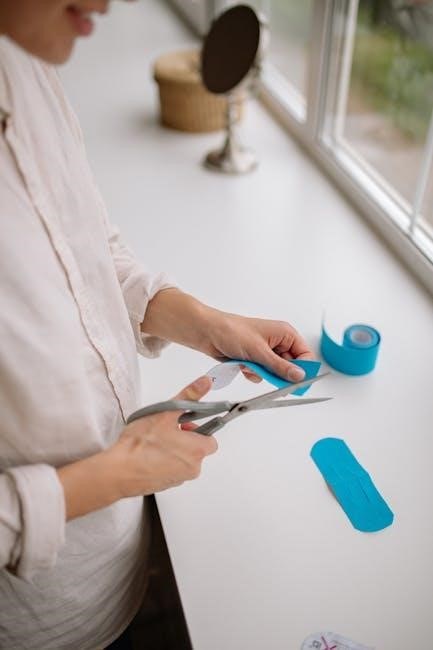
To remove a manual window crank, start by gathering tools like a flathead screwdriver or pliers. Prepare the area by rolling down the window. Use the screwdriver to pry off the retaining clip, then pull the crank straight off. Alternatively, a T-shirt or rag can assist in rocking the crank loose. This method works for most vehicles, ensuring a smooth removal process.

Gather Necessary Tools
To remove a manual window crank, you’ll need a few basic tools. Start with a flathead screwdriver, as it is essential for prying off the retaining clip. Additionally, a pair of needle-nose pliers can be helpful for gripping small components. Some situations may require a wrench or an Allen key, depending on the vehicle’s design. A cloth or rag can also be useful for protecting the door trim or providing extra grip. For vehicles with a recessed crank, a small Pry bar might be necessary. Always ensure your tools are in good condition to avoid damaging the crank or surrounding parts. If you’re unsure about the specific tools needed for your vehicle, consult the owner’s manual or look up a diagram online. Having all the tools ready beforehand will save time and make the process smoother. Remember, patience and care are key to avoiding damage during the removal process.
Prepare the Area
Before removing the manual window crank, it’s important to prepare the area to ensure a smooth and safe process. Start by rolling down the window fully to access the crank mechanism. Cover the door panel and surrounding areas with a soft cloth or towel to protect them from scratches or damage. This is especially crucial if you’re using tools like screwdrivers or pliers, which can slip and cause marks. Clear any obstructions, such as loose items in the door pocket, to give yourself ample workspace. Ensure the door is securely closed and the vehicle is parked on a level surface to prevent any accidental movement. If working in a dimly lit environment, use a flashlight to illuminate the area for better visibility. Finally, remove any rings or jewelry that could get in the way or scratch the components. Taking these preparation steps will help you stay focused and avoid potential damage to your vehicle’s interior.
Remove the Retaining Clip
Once the area is prepared, focus on removing the retaining clip that holds the window crank in place. This clip is usually located at the base of the crank and is designed to keep it securely attached to the door. To remove it, use a flathead screwdriver to gently pry the clip away from the crank. Insert the tip of the screwdriver into the small gap between the clip and the crank, then carefully lever it outward. Be cautious not to apply too much force, as this could damage the clip or the surrounding area. If the clip is particularly stubborn, you can wrap the screwdriver tip with a cloth or use a rubber grip to prevent slipping and scratching the door panel.
Alternatively, some retaining clips can be removed by hand. Simply grasp the clip firmly and twist it counterclockwise until it releases from the crank. Once the clip is removed, you’ll have clear access to the crank itself for the next step in the process.
Remove the Window Crank
With the retaining clip removed, you can now focus on taking out the window crank. Grip the crank firmly and pull it straight away from the door. In some cases, the crank may be held in place by a small screw in the center. If this is the case, use a screwdriver to remove the screw before pulling the crank off. Be gentle but firm to avoid breaking the mechanism or stripping any threads. If the crank is stubborn, you can use a pair of pliers to get a better grip, but be careful not to scratch or damage the crank or the surrounding area.
Once the crank is removed, you’ll have access to the window regulator and other internal components. Set the old crank aside and prepare to install the new one. This step is straightforward but requires careful handling to ensure no damage occurs to the door or the crank itself.
Install the New Window Crank

Once the old window crank is removed, it’s time to install the new one. Start by aligning the new crank with the door mechanism, ensuring it fits properly into the designated slot. If the new crank comes with a retaining clip, attach it by pressing it firmly into place until it clicks. If your vehicle uses a screw to secure the crank, use a screwdriver to tighten it gently but securely. Make sure the crank is seated correctly and rotates smoothly without any resistance.
After installation, test the crank by rolling the window up and down several times to ensure it operates smoothly. If the crank feels loose or the window doesn’t move evenly, check the alignment or tighten the screw if necessary. Proper installation ensures the window crank functions reliably and maintains the integrity of your vehicle’s door mechanism.
Test the New Crank
After installing the new window crank, it’s essential to test it thoroughly to ensure proper functionality. Roll the window up and down several times to check for smooth operation. Verify that the crank turns effortlessly and the window moves evenly without binding or resistance.
Pay attention to any unusual noises or irregular movements, as these could indicate improper installation or alignment issues. If the window doesn’t respond or moves sluggishly, inspect the crank’s connection to the door mechanism and ensure it’s securely attached. Repeat the process a few more times to confirm consistent performance. Testing the crank immediately after installation helps identify and address any potential problems early on, ensuring reliable long-term use.
Additionally, check the crank’s handle for tightness and stability. A loose handle could lead to premature wear or failure. Once satisfied with the crank’s performance, you can be confident in its durability and effectiveness for rolling your window up and down smoothly.
Additional Tips and Precautions
When removing a manual window crank, consider a few extra tips to ensure a smooth process. Use a screwdriver with a rubber grip to prevent slipping and scratching the door panel. Wearing gloves can provide better traction and protect your hands from sharp edges.
If the crank is particularly stubborn, gently rock it back and forth while pulling outward. This motion can help dislodge it without breaking the mechanism. Avoid using excessive force, as this could damage the door or the crank itself.

For vehicles with a retaining clip, ensure it’s fully removed before attempting to pull off the crank. If the clip remains, it could cause the crank to hang or require additional effort to remove. After removal, inspect the area for any leftover debris or residue.
Clean the door handle and surrounding area before installing a new crank to ensure proper fitment and functionality. These precautions will help maintain your vehicle’s condition and ensure a successful replacement process.
Common Mistakes to Avoid
When removing a manual window crank, there are several common mistakes to avoid to ensure a smooth process. One of the most frequent errors is using the wrong tools, such as a Phillips screwdriver instead of a flathead, which can damage the screw or surrounding area. Another mistake is applying too much force, which can break the crank or strip the screw head.

Additionally, many people forget to fully remove the retaining clip before pulling the crank, which can make the process more difficult. Others neglect to protect the door panel, leading to scratches or dents. Some individuals also overlook the small screws that hold the door handle in place, which can complicate the removal process.
Lastly, avoid pulling the crank at an angle, as this can cause the mechanism to break. By being mindful of these common pitfalls, you can ensure a successful and damage-free removal of the manual window crank.

Vehicle-Specific Considerations
When removing a manual window crank, it’s important to consider the specific design of your vehicle. Some cars may have slightly different mechanisms or additional components, such as screws or clips, that hold the crank in place. For example, certain models may require removing the door handle or panel to access the crank, while others may have a simpler design with only a retaining clip.
Always consult your vehicle’s manual or look for model-specific tutorials online, as the process can vary between manufacturers. For instance, older cars like the 2003 Dodge Ram 2500 may have a more straightforward removal process, while newer models might involve additional steps. Be sure to check for any screws or clips that might be hidden under the crank or handle.
Using the correct tools and techniques for your vehicle’s make and year is crucial to avoid damaging the door or the window mechanism. If you’re unsure, consider seeking guidance from a professional or a trusted repair manual specific to your car’s model.

Removing a manual window crank is a straightforward process that can be completed with basic tools and a bit of patience. By gathering the necessary tools, preparing the area, and carefully removing the retaining clip, you can take out the old crank and replace it with a new one. Testing the new crank ensures proper function, and following additional tips helps avoid common mistakes.
Vehicle-specific considerations are crucial, as some models may have unique mechanisms or require additional steps. Always consult your vehicle’s manual or online resources for model-specific guidance. Avoid using excessive force, as this could damage the door or window mechanism.
With these steps, you can confidently remove and replace your manual window crank. Remember to take your time and work carefully to ensure a successful outcome. This DIY project is manageable for most car owners, saving you time and money while keeping your vehicle in good condition.